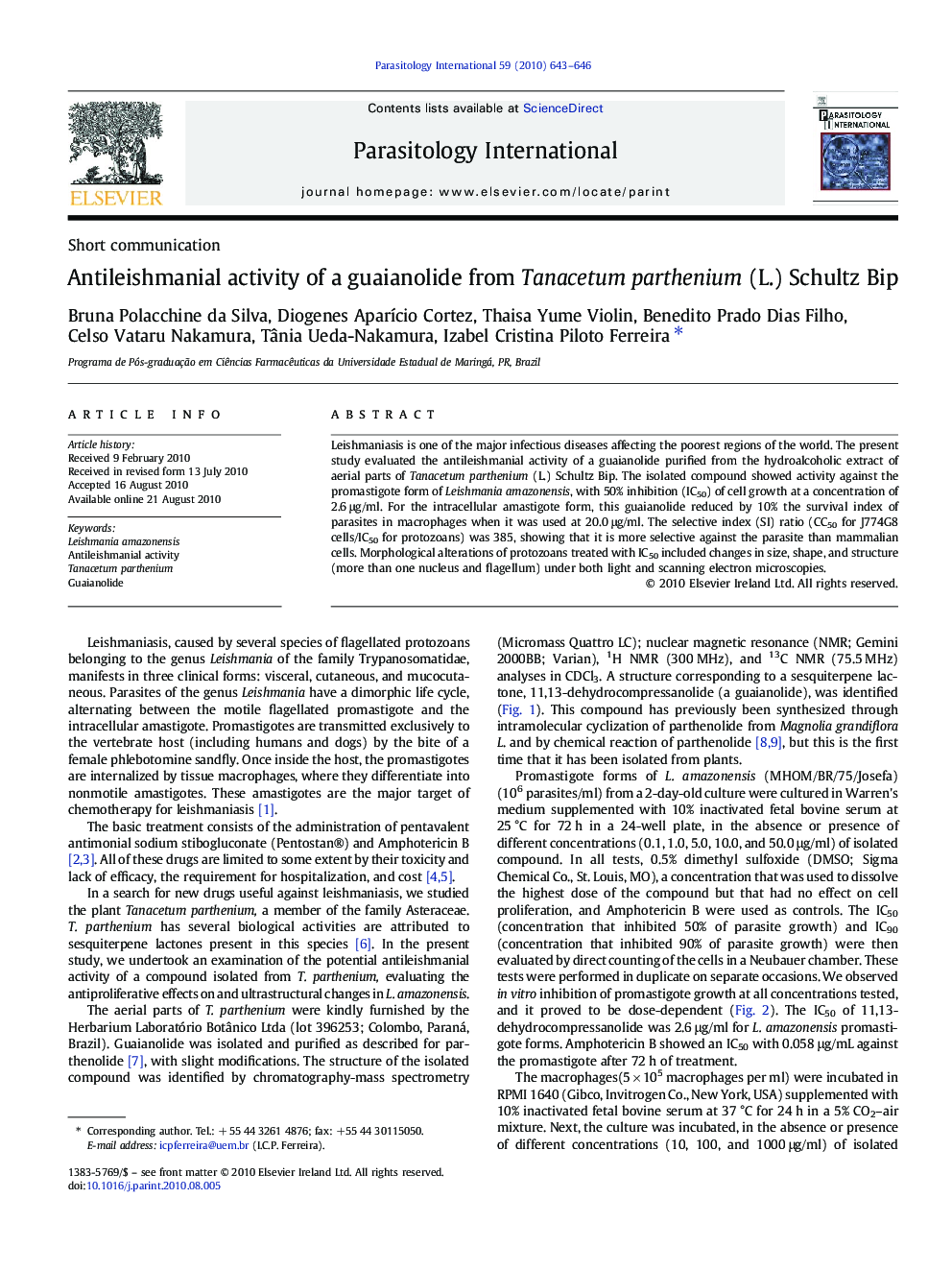| Article ID | Journal | Published Year | Pages | File Type |
|---|---|---|---|---|
| 3418102 | Parasitology International | 2010 | 4 Pages |
Leishmaniasis is one of the major infectious diseases affecting the poorest regions of the world. The present study evaluated the antileishmanial activity of a guaianolide purified from the hydroalcoholic extract of aerial parts of Tanacetum parthenium (L.) Schultz Bip. The isolated compound showed activity against the promastigote form of Leishmania amazonensis, with 50% inhibition (IC50) of cell growth at a concentration of 2.6 μg/ml. For the intracellular amastigote form, this guaianolide reduced by 10% the survival index of parasites in macrophages when it was used at 20.0 μg/ml. The selective index (SI) ratio (CC50 for J774G8 cells/IC50 for protozoans) was 385, showing that it is more selective against the parasite than mammalian cells. Morphological alterations of protozoans treated with IC50 included changes in size, shape, and structure (more than one nucleus and flagellum) under both light and scanning electron microscopies.
Graphical abstractThe guaianolide purified from the hydroalcoholic extract of aerial parts of Tanacetum parthenium (L.) Schultz Bip showed activity against the promastigote form of Leishmania amazonensis, with 50% inhibition (IC50) of cell growth at a concentration of 2.6 µg/ml. For the intracellular amastigote form, this guaianolide reduced by 10% the survival index of parasites in macrophages when it was used at 20.0 µg/ml. The selective index (SI) ratio (CC50 for J774G8 cells/IC50 for protozoans) was 385, showing that it is more selective against the parasite than mammalian cells. Morphological alterations of protozoans treated with IC50 included changes in size and shape under both light and scanning electron microscopies.Figure optionsDownload full-size imageDownload as PowerPoint slide
